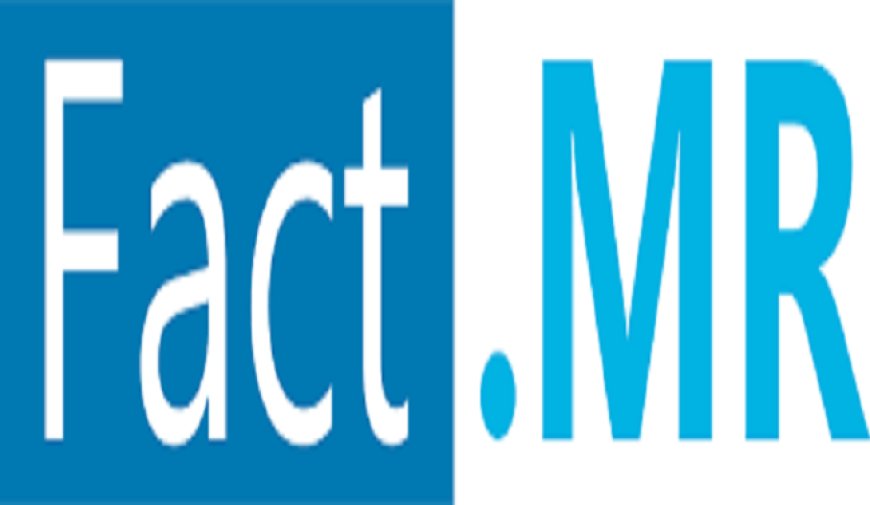Ceramic Coatings Market Size & Trend Analysis by Fact MR
The ceramic coatings market is valued at US$ 7.4 billion in 2022 and is projected to reach US$ 15.8 billion by 2032, expanding at a CAGR of 8.2% during the forecast period from 2022 to 2032.

The ceramic coatings market is valued at US$ 7.4 billion in 2022 and is projected to reach US$ 15.8 billion by 2032, expanding at a CAGR of 8.2% during the forecast period from 2022 to 2032.
The ceramic coatings market has witnessed significant growth in recent years, driven by its increasing adoption across various industries, including automotive, aerospace, healthcare, and energy. These coatings, known for their superior thermal resistance, corrosion protection, and durability, are widely used to enhance the performance and longevity of components exposed to extreme conditions. Ceramic coatings are applied using advanced techniques such as thermal spraying, physical vapor deposition (PVD), and chemical vapor deposition (CVD), ensuring high efficiency and extended service life of critical machinery and surfaces. The growing focus on energy efficiency, the rising demand for protective coatings in industrial applications, and advancements in material science have contributed to the expanding market for ceramic coatings.
Want Full Report? Enquire Here-https://www.factmr.com/report/ceramic-coatings-market
Market Insights
The market for ceramic coatings is being shaped by several key factors, including technological advancements, increased industrial applications, and growing environmental concerns. One of the primary drivers of market growth is the widespread use of ceramic coatings in the automotive and aerospace industries. These coatings help reduce friction, enhance wear resistance, and improve fuel efficiency, making them essential in high-performance engines and turbine components. Additionally, the demand for biocompatible ceramic coatings in the healthcare sector has increased, particularly in medical implants and surgical instruments, due to their superior resistance to corrosion and biocompatibility. The energy sector has also emerged as a significant consumer of ceramic coatings, with applications in power generation, fuel cells, and solar panels. Despite challenges such as high application costs and technical complexities, the market continues to expand, driven by innovation and increasing industry demand.
Market Outlook
The future of the ceramic coatings market appears promising, with steady growth expected across various sectors. The increasing use of ceramic coatings in renewable energy applications, particularly in wind turbines and solar panels, is anticipated to boost market expansion. Additionally, advancements in nanotechnology are paving the way for more efficient and durable ceramic coatings with enhanced properties, including self-healing and anti-fouling capabilities. The automotive industry’s shift towards electric vehicles (EVs) and lightweight materials is also expected to create new opportunities for ceramic coatings, as manufacturers seek high-performance coatings to improve energy efficiency and vehicle longevity. Furthermore, stringent regulations on emissions and environmental sustainability are encouraging industries to adopt ceramic coatings as eco-friendly alternatives to traditional coatings. As industries continue to innovate and invest in protective and performance-enhancing solutions, the ceramic coatings market is set for sustained growth in the coming years.
List of Key Companies Profiled in The Report
- Bodycote
- Praxair Surface Technologies, Inc.
- Aremco Products
- APS Materials
- Cetek Ceramic Technologies Ltd
- Others
Recent Industry News
Recent developments in the ceramic coatings market highlight the growing interest in innovative and high-performance coatings. Several leading companies have announced new product launches and strategic collaborations to expand their market reach and improve coating efficiency. For instance, advancements in thermal barrier coatings for aerospace applications have led to the development of next-generation coatings with improved heat resistance and durability. In the automotive sector, manufacturers are focusing on ceramic coatings that offer superior protection against UV radiation, corrosion, and scratches, particularly for electric vehicle components. The healthcare industry has also seen progress, with the introduction of antimicrobial ceramic coatings for medical devices and hospital surfaces to enhance hygiene and infection control. As industries continue to invest in advanced coatings, the ceramic coatings market is witnessing rapid advancements and increased adoption.
Notable Developments
Several notable developments have shaped the ceramic coatings market, influencing its growth trajectory. The emergence of plasma-sprayed ceramic coatings has revolutionized the industry by offering improved adhesion, wear resistance, and thermal stability, making them ideal for extreme operating environments. Additionally, companies are exploring environmentally friendly ceramic coatings that reduce volatile organic compound (VOC) emissions, aligning with global sustainability goals. Strategic partnerships between coating manufacturers and end-use industries have also played a crucial role in expanding the market, with increased investments in research and development leading to more durable and efficient coatings. Moreover, the rapid expansion of the renewable energy sector has driven demand for ceramic coatings in solar panels, wind turbine components, and energy storage systems. With continuous innovation and evolving industry requirements, the ceramic coatings market is poised for sustained growth and technological advancements in the coming years.
Competitive Landscape
The ceramic coatings market has witnessed several notable developments in recent years. A&A Coatings recently secured multiple large contracts for the ceramic coating of U.S. Navy valve balls, with waterway sizes ranging from 8″ to 16″. In August 2021, Keronite achieved ISO 9001 and AS9100 (D) accreditation, reinforcing its commitment to quality and industry standards. Additionally, in July 2020, Keronite announced the opening of a U.S. tech center to enhance its R&D capabilities in North America.












